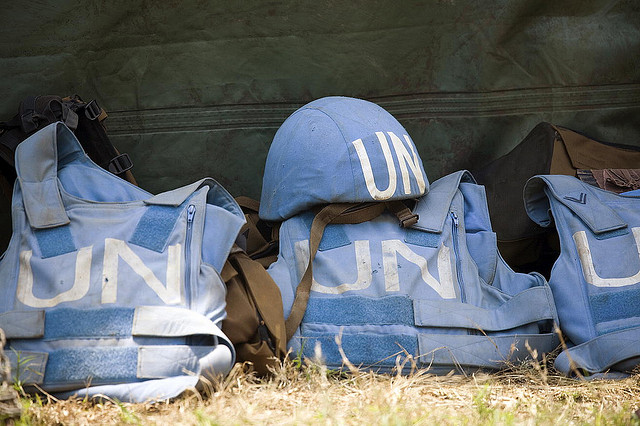There is a storm of controversy surrounding whether Captain Phillips the movie is consistent with Phillips’ book and about whether Phillips’ account is consistent with the reality of what occurred onboard the Maersk Alabama in 2009. In fact, both his own crewmembers and their Somali attacker disagree with Phillips’ account. But lurid “Hollywood Insider” details aside, how well or poorly does the Captain Phillips story hold up to the reality of contemporary maritime piracy? In some ways, especially visually, the film does quite well, but in others the resemblance to reality — or at least the average pirate attack — is woefully misleading.
Case Selection
First things first, the story recounted in Captain Phillips is highly atypical. While that makes for great drama, it should not be taken as representative. Phillips and his crew spent 5 days in their encounter with Somali pirates, the vessel was flagged to the United States, Navy SEALs rescued them, and the pirate that was still alive was prosecuted and imprisoned. Each of these four details is accurate according to the facts of the case and very different from the average hijacking, kidnapping and ransom event.
Any hostage experience is harrowing. But this was also an incredibly brief experience. According to the most recent data from 2012, the average Somali hostage event lasts 11 months and more than 50 percent of the hostages being held in Somalia at the end of 2012 had been there for over 2 years. The longest hostage taking that I know of was the 1,000-day ordeal of the MV Iceberg 1. Needless to say, the vast majority of these guys aren’t being rescued.
In other parts of the world, such as the Gulf of Guinea near Nigeria, hostage takings tend to be shorter because pirates are motivated to loot the vessel’s oil and not to secure a ransom. In Southeast Asia, in contrast, the crew is more likely to be marooned than taken hostage. (For first hand accounts of more lengthy hostage experiences, look for Captain Francis Roucou’s 88 Days or Paul and Rachel Chandler’s Hostage: A Year at Gunpoint with Somali Gangsters.)
Next, the international shipping industry operates on shoestring budgets. As a cost-cutting measure, many shippers register their vessels under so-called “flags of convenience” or FOCs, countries willing to profit from vessels registration fees but never intending to follow through on safety inspections, enforce labor standards, or require much else. The companies that own the ships profit from the countries’ laissez faire practices, but this often comes at the crewmembers and the environment’s expense. To illustrate, as of 2010 the United States counted 393 vessels in its merchant marine, ranking it the 26th largest in the world. In contrast, a whopping 794 American owned ships were registered in other countries, many of them known FOCs including the Marshall Islands (200), Panama (90), the Cayman Islands (57), and Liberia (53) — probably the registered home flag for your last cruise ship vacation.
Aside from ignoring the recommendation that ships stay at least 600 miles off of the Somali coast (and probably violating the terms of its insurance policy), the Maersk Alabama was not skirting any US laws when it was captured. In many other cases, there is a real question regarding which country ought to take responsibility in a hijacking. Would you prefer to spend your tax dollars to recoup a corporate asset whose company had refused to pay its fair share for the military that would rescue it? Because hundreds of ships US ships flagged under FOCs do just that every day. For this and many other reasons, armed rescues are few and far between.
Finally, today a substantial minority of Somali pirates is being prosecuted by the countries they attack and by Somalia’s neighbors. However, for various reasons ranging from the lack of will, its high cost, abysmal at-sea forensics, underreporting, and gaps in domestic laws, pirates are still unlikely to face legal consequences for their actions. In the Gulf of Guinea, where particularly violent piracy is on the rise, not a single person has been prosecuted through the end of 2012. And this stands in marked contrast to the estimated $100 million USD being spent in the region on military remedies.
“No Al Qaeda. No Al Qaeda.” “Business. Just business.”
In the film, a pirate reassures the crew that his motives are purely monetary. This is partially true. Somali piracy is business-like and not directly motivated by politics. Nor do the resources that Somali pirates accrue go directly to funding groups like Al Qaeda or the Somali Al Qaeda affiliated group, Al Shabaab. (In contrast, piracy that occurs in some other parts of the world, notably in Nigeria and previously in Southeast Asia, is politically motivated and/or associated with funding insurgency.)
On the other hand, transnational crime is often indirectly related to transnational terrorism and insurgency because they both rely on the underground economy. Somali piracy is no exception. A recent report by the World Bank and the UNODC finds that, when investing within Somalia, pirate financiers invest most heavily in “militias or political influence.” It only reports active collaboration with Al Shabaab or other insurgent groups like Al Qaeda in the Arabian Peninsula in the Puntland region (p.60-61, 64). And even there, the interaction tends to be through “taxes” paid by pirates to Al Shabaab for the use of ports, for “protection” or for weapons procurement rather than strategic cooperation. But it hardly matters if the motive is “just business” for the pirates when the net result is to the financial benefit of insurgent groups and local warlords. Piracy does serve to fuel the violence on land.
So how should the differences between the movie and what I’ve described change the way that we think about maritime piracy?
There has been a certain triumphalism surrounding Somali piracy since its frequency began to decline in 2012. The popular press is attributing most of the decline to assertive foreign naval actions (including those depicted in Captain Phillips) and the increased use private military contractors onboard vessels. But there’s little compelling evidence to suggest that this is true. It is difficult to assess what it is exactly that has “worked” to curb Somali piracy because so many fixes were pursued simultaneously: armed guards, naval escorts, higher insurance premiums, defensive training, safe rooms, non-lethal weapons, alternate routes, and longer more enforceable jail terms. Moreover, much of the evidence seems to point to cheap defensive measures onboard as providing the greatest security bang-for-your-buck. In short, while the action is suspenseful and the story is compelling, you shouldn’t leave the theater convinced that the problem of Somali piracy — or piracy in general — can be solved with brute force. Most hijackings won’t be resolved this way and probably shouldn’t be if cost and human safety are the priority.





